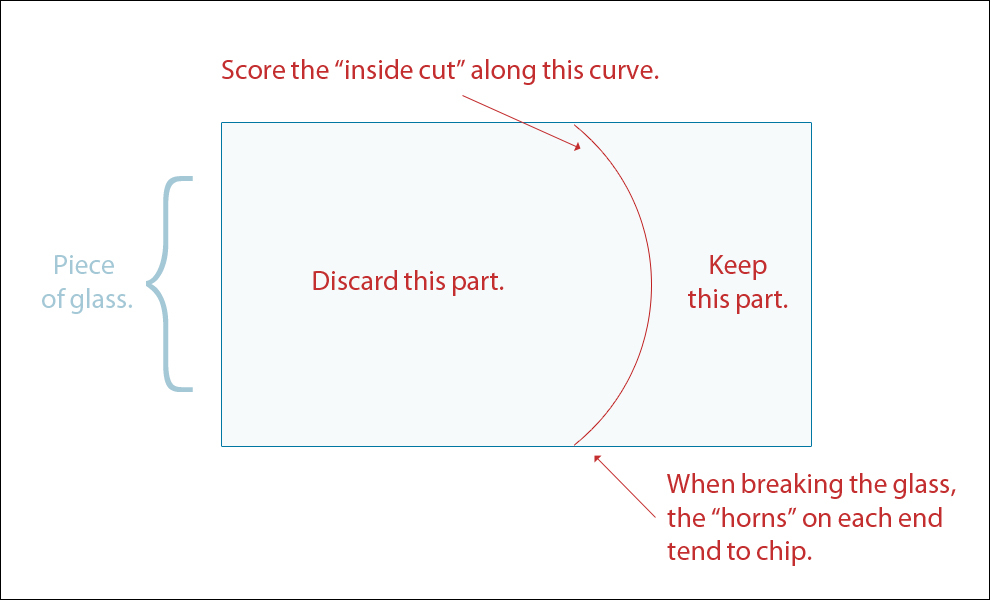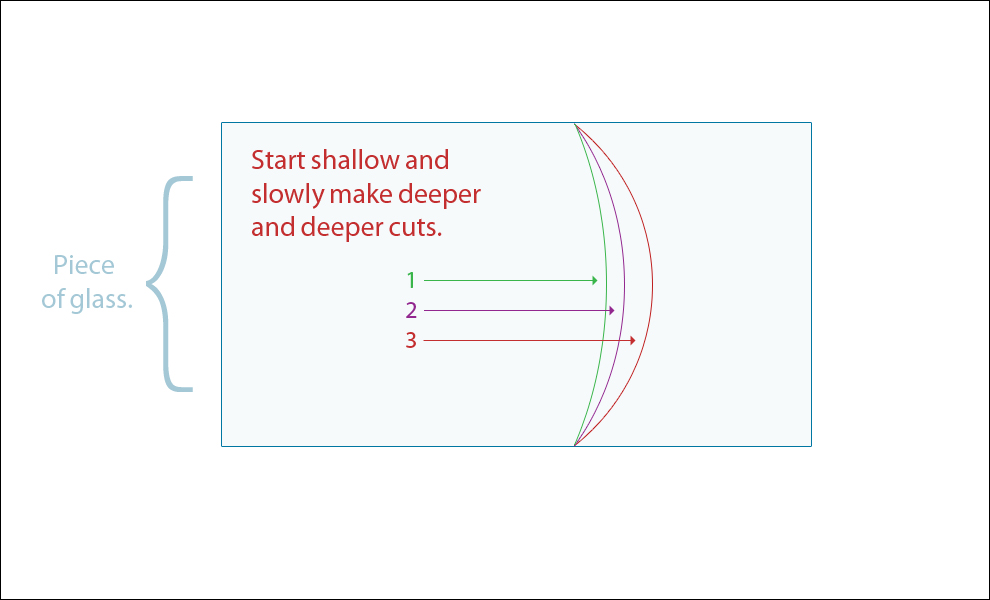
I Watched An Artist Create Stained Glass And It Changed My Goals
Until recently, I had never been inside a stained glass studio.
Without any planning at all, I found myself inside two different studios over the span of three days. Strange how life works like that.
I assumed I would see some nicely colored windows, or something similar, but that would be it. Little did I know, I was about to learn a lesson about life.
During a conversation with one of the artists, I was told about a strategy they use to cut glass, and immediately realized this same idea applies to habits, improvement and almost everything in life.
Here’s what the artist told me:
Lessons Learned from Stained Glass
Stained glass artists create different designs by making cuts on the glass to “score” it and then break off the pattern or shape they want to use in the finished product. (In other words, they make a notch in the glass and break the pieces apart like you would with a Kit Kat bar.)
The most difficult cut in stained glass is called an inside cut. Basically, it’s a curved line where you throw away the part inside of the curve. The problem with inside cuts is the edges of the curve tend to chip when the pieces of scored glass are broken apart.
The image below shows what I mean:

As the artist talked about inside cuts, he said, “The glass will shatter if you try to cut too much off at once. The best way to do an inside cut is to slice off smaller curves piece-by-piece. In fact, it’s not just the best way to do it, it’s the only way to do it.”
So, you start by slicing a shallow curve and breaking off a small piece. Then, you cut a slightly deeper curve and break that off, and so on, until you have your full inside cut.
The image below shows the strategy:

By slowly cutting deeper and deeper curves, the artist prevents the glass from chipping and breaking as it changes shape.
Inside Cuts in Everyday Life
Changing your behavior, building new habits and learning new skills is a lot like making an inside cut on a piece of glass.
If you want, you can try to make a big change and cut the entire piece at once. We convince ourselves we can do this all the time.
We’ll commit to transforming our diet overnight, or we get inspired to launch a business in a weekend, or we finally get motivated to work out and push ourselves to the brink of exhaustion.
If our lives are like the piece of glass, we try to change the entire shape all at once.
Why? Because it’s so easy to focus on achievements instead of progress. We tend to get obsessed with our goals, rather than focusing on our system.
I don’t know about you, but I’ve made this mistake a ton of times myself. I’ll get excited and motivated, and jump into a project or chase a goal with everything I have. But, pretty soon, the pieces begin to break and I have to start over.
Approach Change Like a Stained Glass Artist
The alternative is to approach your goals and dreams like a stained glass artist.
You can choose to make slow, methodical gains. Start with a small, unimpressive cut, something you can easily handle, and do it well. Then, repeat with a slightly bigger step. And again. And again. And again.
This process is like starting with something that is so easy, you can’t say no, then focusing on improving by 1 percent each time and then committing to doing more repetitions.
Of course, change isn’t easy, no matter how you do it. Slow gains are boring; they’re unsexy.
Nobody writes news stories about them. But, moving forward in a slow and methodical manner doesn’t mean you lack ambition, drive or vision. The stained glass artist has a very clear vision; he knows exactly what he is working toward.
You and I can do the same. If we keep making small improvements, then pretty soon, we will end up with a beautiful masterpiece on our hands instead of a bunch of fragments.
James Clear writes at JamesClear.com, where he shares science-based ideas for living a better life and building habits that stick. To get strategies for boosting your mental and physical performance by 10x, join his free newsletter.
This article was originally published on JamesClear.com.